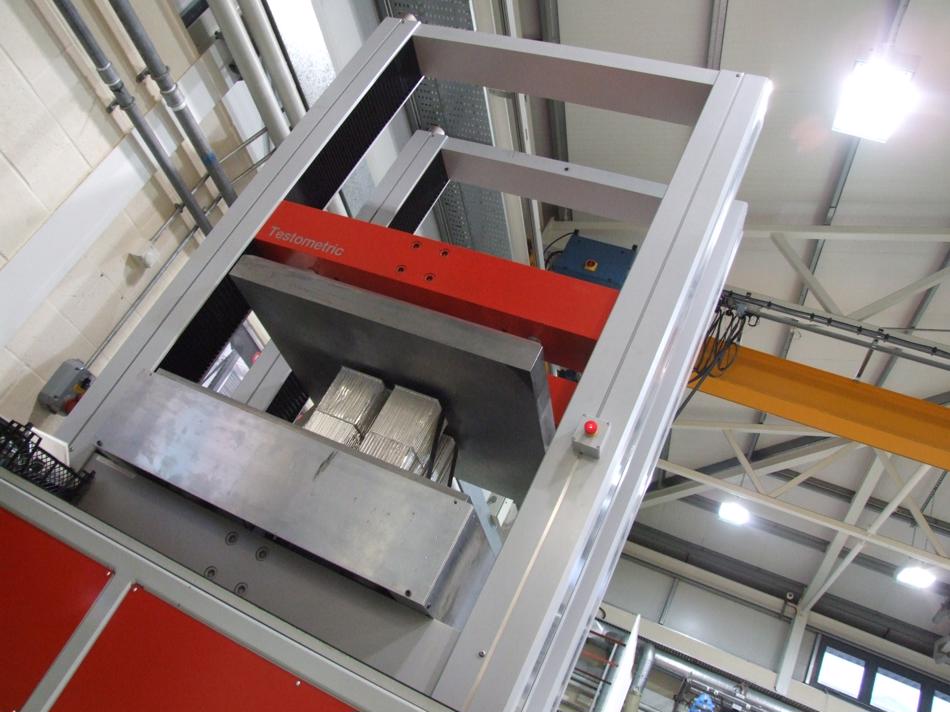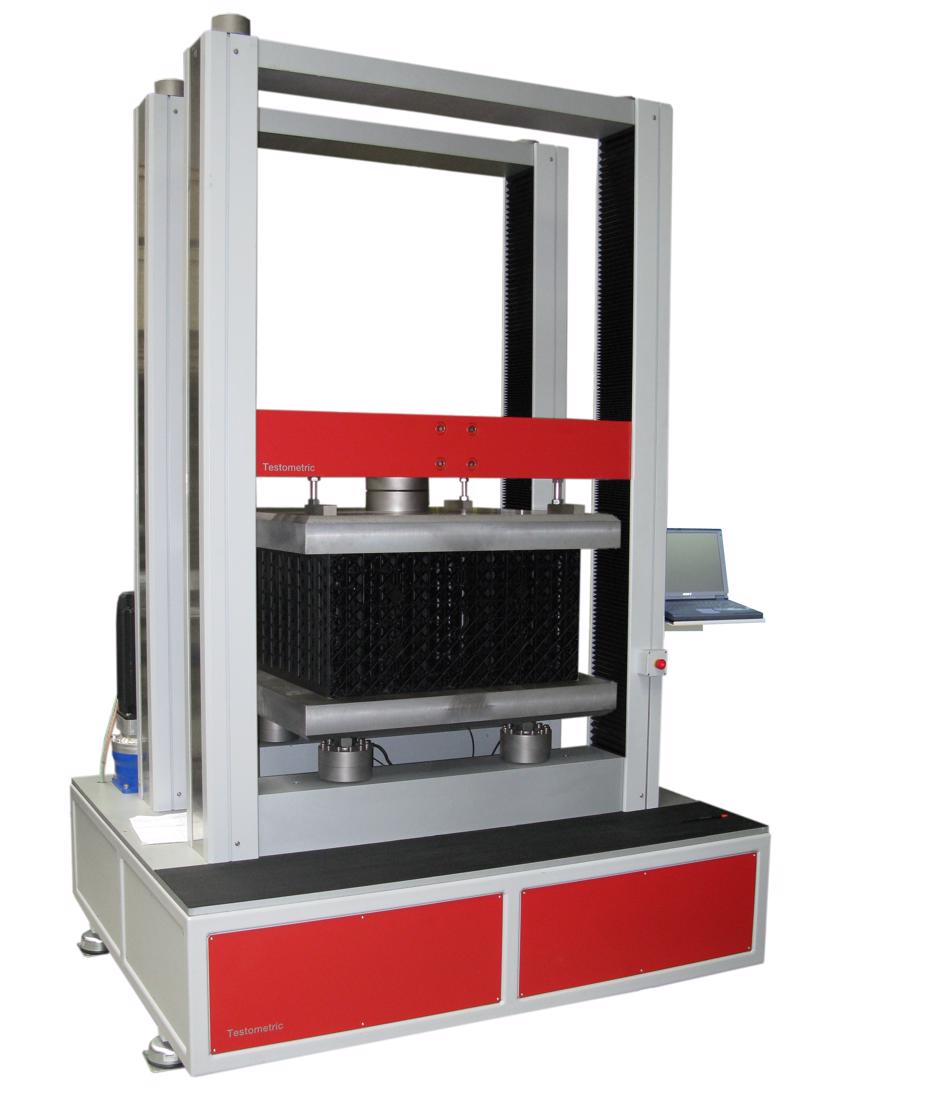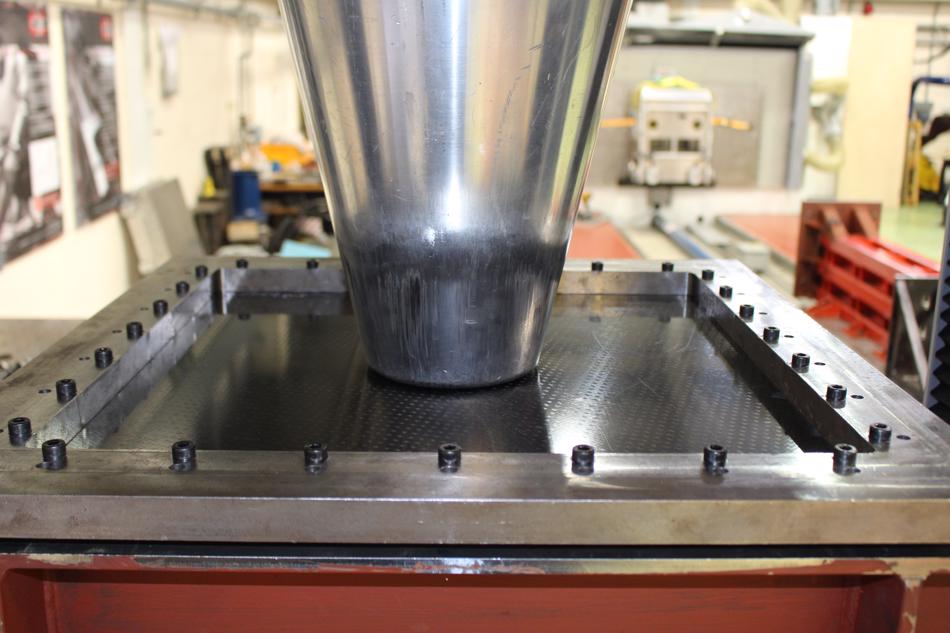Danger is unquestionably a central element of Formula One racing. However, the regulation and implementation of so many death-defying safety features make the sport an unbelievable success.
F1 vehicles must pass a number of strict crash tests – both dynamic and static – which are specified by the FIA, before they are allowed to race on the circuit.1
A vital aspect of this testing specifies that the chassis must be able to resist impacts and any intrusions from alien objects. This article closely examines importance of intrusion testing, and assesses how the safety of F1 drivers is ensured by Testometric’s 600kN FS testing machine.

Marcus Ericsson, a Swedish F1 driver, lost control of his vehicle while driving at 220 mph in August 2018. He veered into a crash barrier, and his vehicle rapidly disintegrated before onlooking spectators, completing 3 barrel-rolls before coming to a halt.2
To those who aren’t familiar with F1, the most shocking thing was what happened next. Ericsson radioed his team to say, “I don’t know what happened there. I’m okay,” before marshals helped him from his car, and he limped to Monza’s medical center for a health assessment.
It is difficult to exaggerate how different the Formula One of the 1950s was from the sport of today. There have been a whole host of changes to the actual racing rules since then, with the most significant alterations coming in terms of safety. Having previously been an afterthought, the safety of drivers is now a key aspect of Formula One’s ethos and regulations.
The ‘survival cell’ of the driver is central to the design of a modern F1 chassis. The features of this chassis are painstakingly engineered in order to protect drivers from almost any threat which is conceivable.
Modern Formula 1 cars must pass a stringent series of crash tests prior to being considered fit for use, and the mechanics of collisions and their impacts on the human body have been meticulously measured and characterized. Exceptional engineering skills have been used in order to implement these requirements and, as a result, it is common to see drivers such as Ericsson walk away virtually unscathed from accidents at triple-digit speeds.
A pivotal element of crash testing is intrusion testing of the chassis. This is designed to ensure that alien objects such as other vehicles and crash barriers are unable to penetrate the monocoque.
The majority of the sport’s intrusion testing is carried out by the UK’s Cranfield Impact Centre – an internationally recognized test facility with VCA and FIA approval.3 Cranfield Impact Centre undertakes tests in order to support the automotive, military, and medical industries, as well as F1 teams.
It goes without saying that state-of-the-art testing equipment must be used in order to comply with the FIA’s precision requirements. Testometric’s 600kN CT universal testing machine is used by Cranfield’s intrusion testing team. This is a floor-mounted unit which can deliver enormous force in a closely controlled manner.4,5 Testometric installed both hardware and software, as well as providing yearly servicing and calibration.

A sample panel of chassis material which has been manufactured by an F1 team is mounted onto the base of the testing machine during these tests, before a cone-shaped intrusion tester is precisely and slowly driven into it. In order the make sure that the sample meets FIA standards, numerous synchronous data streams record detailed measurements of force and intrusion.
The chassis panel needs to be able to withstand 250kN of force distributed over an impactor with a diameter of six inches in order to pass the test. That’s approximately the same as the force provided by a Boeing 747 engine.6
A vast amount of energy must also be able to be absorbed by the chassis material during these intrusion tests. Although making the chassis incredibly hard is a possibility, it needs to be able to show a certain degree of flexibility if the risk of injury to the driver is to be reduced. FIA rules dictate that a chassis must be able to absorb 6 kJ of energy within the first 100mm of deflection during the intrusion test.
Intrusion and Strength-Testing Technology
The FS600 CT testing machine can deliver a controlled force of up to 600kN, making it both versatile and powerful enough to meet the requirements of F1 intrusion testing.

Brushless servo motors and Digital AC servo drives deliver high-precision testing, offering speeds from 600 mm/min down to 1 µm/min in steps of 1 µm/min.
Including T-slots for accessory mounting, an accessible and robust open-sided frame is provided by rigid extruded support columns and high-stiffness loading frames with specialized steel crossheads.
The level of expertise and engineering skill that is put into testing every 0.3 m2 panel of chassis material is a testament to the progress of F1 and the culture of safety that has evolved within the sport.
With straightforward configuration for complex and cyclic multi-stage test procedures, Testometric’s FS600 CT testing machines are completely digitized with high-precision controls. There are 6 I/O channels for extra devices like micrometers and extensometers, as well as the 4 high-speed data collection systems.
Testometric manufactures a variety of high-performance mechanical testing machines for production lines, research establishments, and laboratories in over 100 countries.
References and Further Reading
- Formula 1 | Crash tests. Available at: https://www.formula1.com/en/. (Accessed: 25th January 2019)
- Marcus Ericsson survives 220mph crash at practice for Italian Grand Prix | Sport | The Guardian. Available at: https://www.theguardian.com/sport/2018/aug/31/marcus-ericsson-crash-italian-grand-prix-monza. (Accessed: 25th January 2019)
- Cranfield Impact Centre | CIC. Available at: http://www.cranfieldimpactcentre.com/. (Accessed: 25th January 2019)
- 600kN FS600 CT – Testometric Co. Ltd. Available at: https://www.testometric.co.uk/600kn/. (Accessed: 25th January 2019)
- 600kN FS Machines – Testometric Co. Ltd. Available at: https://www.testometric.co.uk/600kn-fs/. (Accessed: 25th January 2019)
- F1 Feature: Safety in Formula One. | News | Crash. Available at: https://www.crash.net/ (Accessed: 25th January 2019)
.jpg)
This information has been sourced, reviewed and adapted from materials provided by Testometric Company Ltd.
For more information on this source, please visit Testometric Company Ltd.